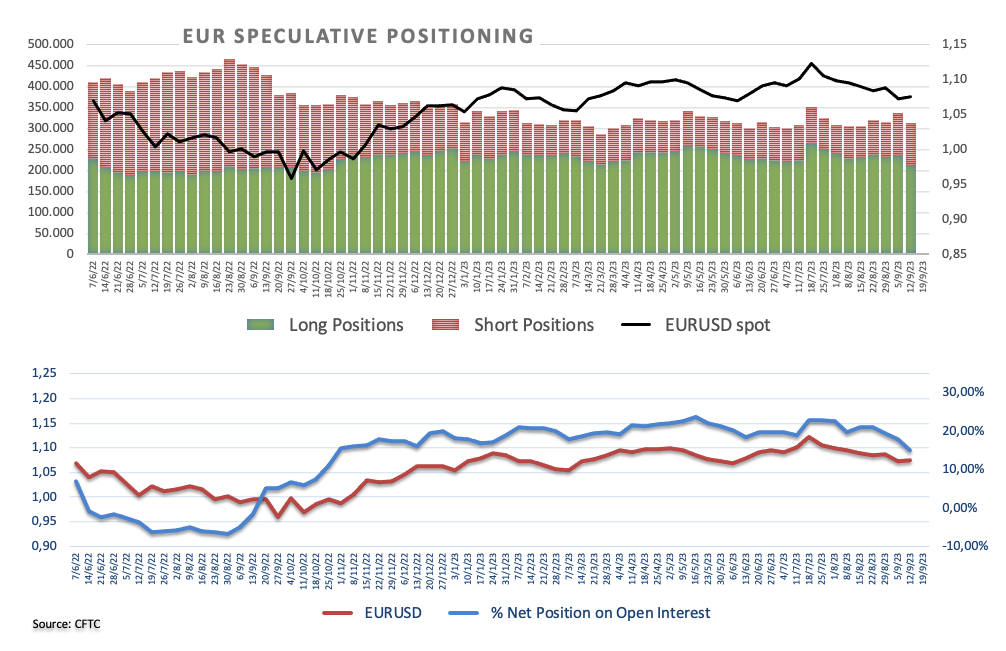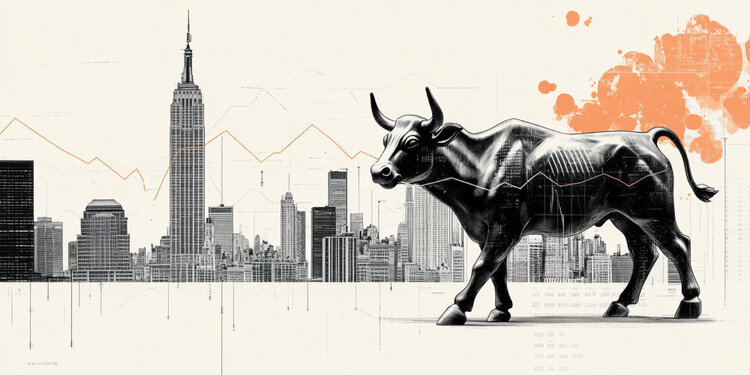- The Euro is now losing some buying pressure against the US dollar.
- Stock markets in Europe start the week negative.
- EUR/USD remains pressured below 1.0700.
- The DXY Dollar Index remains above the 105.00 barrier.
- The FOMC meeting will be the highlight of this week.
- The NAHB index will focus investors’ attention later in the session.
The Euro (EUR) alternates gains and losses against the US Dollar (USD) at the start of the week, which has led the EUR/USD pair to oscillate around the 1.0650 area early in the European morning.
On the opposite side, the Dollar appears to be under tepid bearish pressure, although it manages to hold above the key 105.00 barrier amid the so far persistent bullish bias in US yields across the entire curve.
On the monetary policy front, investors continue to value last week’s moderate hike by the European Central Bank (ECB) and continue to anticipate the possibility of the Federal Reserve (Fed) cutting interest rates at some point in the second quarter of 2024.
On the other hand, net bullish positions in the Euro extended the bearish trend and reached levels last seen in mid-November 2022, according to the CFTC’s latest positioning report for the week ending September 12. In the period studied, the pair rose to the 1.0750 area and lost ground shortly after, before the ECB event.
The lack of releases on the euro economic docket should divert attention to the US calendar, where the NAHB House Price Index and Long-Term ICT Flows will be released later in the session.
Daily summary of market drivers: Euro in focus ahead of Fed
- So far, the Euro has failed to strengthen against the Dollar.
- US and German yields have started the week on a positive note.
- Investors expect the Fed to keep rates unchanged this week.
- The Fitch agency confirms Germany’s AAA rating with a stable outlook.
- Traders see possible rate cuts by the Fed in the first half of 2024.
- The stagnation of the ECB’s rate hike cycle appears to be gaining strength.
Technical Analysis: Greater weakness of the Euro in the short term cannot be ruled out
EUR/USD looks to extend Friday’s bounce from multi-week lows near 1.0630.
If EUR/USD breaks below the September low of 1.0631 (September 15), it could revisit the March low of 1.0516 (March 15) before reaching the 2023 low of 1.0481 (January 6).
On the other hand, attention is currently focused on the 200-day SMA at 1.0827. If the pair breaks this level, bullish momentum could develop leading to testing the 55-day SMA at 1.0922 before reaching the weekly high of 1.0945 (Aug 30). As a result, this scenario may pave the way for a recovery towards the psychological level of 1.1000 and the August high of 1.1064 (Aug 10). If the pair breaks above this zone, it could relieve some of the bearish pressure and head towards the weekly high of 1.1149 (July 27), followed by the 2023 high at 1.1275 (July 18).
It is essential to remember that as long as EUR/USD is below the 200-day SMA, the pair could continue to fall.
Frequently asked questions about the Euro
What is the Euro?
The Euro is the currency of the 20 countries of the European Union that belong to the euro zone. It is the second most traded currency in the world, behind the US dollar. In 2022, it accounted for 31% of all foreign exchange transactions, with an average daily volume of more than $2.2 trillion per day.
EUR/USD is the most traded currency pair in the world, accounting for an estimated 30% of all transactions, followed by EUR/JPY (4%), EUR/GBP (3%) and EUR/AUD (2% ).
What is the ECB and how does it influence the Euro?
The European Central Bank (ECB), headquartered in Frankfurt, Germany, is the reserve bank of the euro zone. The ECB sets interest rates and manages monetary policy.
The ECB’s main mandate is to maintain price stability, which means controlling inflation or stimulating growth. Its main instrument is to raise or lower interest rates. Relatively high interest rates – or the expectation of higher rates – tend to benefit the euro and vice versa.
The Governing Council of the ECB takes monetary policy decisions at meetings held eight times a year. Decisions are made by the heads of the eurozone’s national banks and six permanent members, including ECB President Christine Lagarde.
How do inflation data influence the value of the Euro?
Eurozone inflation data, measured by the Harmonized Index of Consumer Prices (HICP), is an important econometric data for the euro. If inflation rises more than expected, especially if it exceeds the 2% target set by the ECB, it is forced to raise interest rates to bring it back under control.
Relatively high interest rates compared to their peers tend to benefit the euro, making the region more attractive as a place for global investors to park their money.
How do economic data influence the value of the Euro?
Data releases measure the health of the economy and can influence the euro. Indicators such as GDP, manufacturing and services PMIs, employment and consumer sentiment surveys can influence the direction of the single currency.
A strong economy is good for the euro. Not only does it attract more foreign investment, but it may encourage the ECB to raise interest rates, which will directly strengthen the euro. Conversely, if economic data is weak, the euro is likely to fall.
The economic data for the four largest economies in the eurozone (Germany, France, Italy and Spain) are especially significant, as they represent 75% of the eurozone economy.
How does the trade balance affect the Euro?
Another important publication for the euro is the Trade Balance. This indicator measures the difference between what a country earns from its exports and what it spends on imports during a given period.
If a country produces highly sought-after export products, its currency will appreciate due to the additional demand created by foreign buyers wishing to purchase these goods. Therefore, a positive Net Trade Balance strengthens a currency and vice versa for a negative balance.
Source: Fx Street
I am Joshua Winder, a senior-level journalist and editor at World Stock Market. I specialize in covering news related to the stock market and economic trends. With more than 8 years of experience in this field, I have become an expert in financial reporting.








